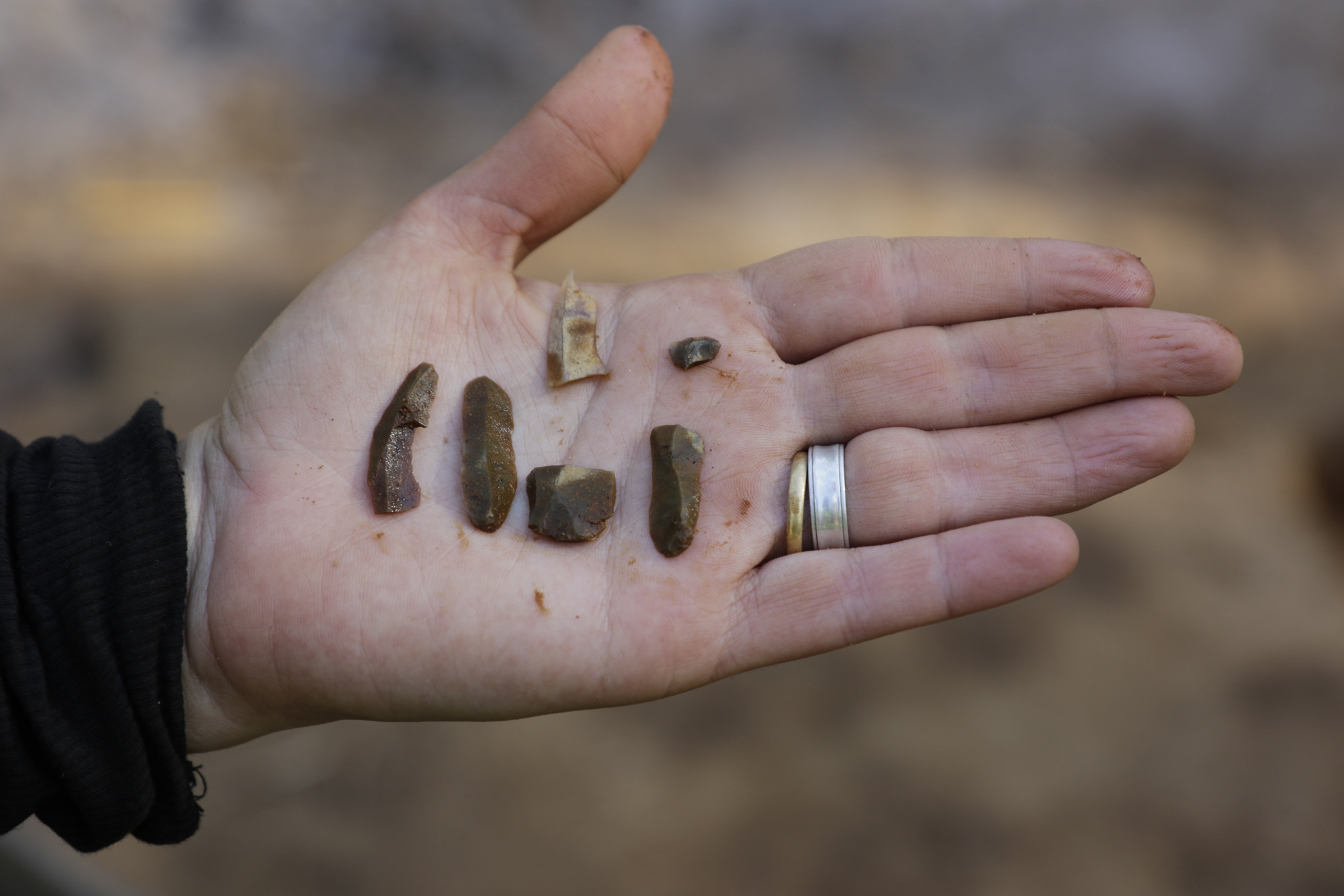
[fade]How do we acquire knowledge about the past? For three years, visual artist Nina Torp has followed the archaeological investigations carried out in connection with the building of the new E18 motorway between Tvedestrand and Arendal in southern Norway.[/fade]
[fade]Exhibition by Nina Torp at the Museum of Cultural History.
8th February — 3rd June 2018[/fade]
[fade]The exhibition SITUATIONS is a contemporary art project about how cultural heritage is created. In her interpretation of the scientific work, Torp uses photoseries, video works and sculptural works.
She has followed the entire process; from the removal of the top soil by mechanical earth movers, to the excavation itself where archaeologists unearth fragments of the past, to the time when the finds with their respective bar codes are placed in storage, having become part of the cultural heritage of Norway.
In 2016, the first part of the SITUATIONS project was shown at two archaeological sites in Arendal.[/fade]
[fade]The project is supported by the Arts Council Norway, the Norwegian Visual Artists Remuneration Fund, the Norwegian Photographic Fund and the Museum of Cultural History in Oslo.[/fade]
[fade]Information[/fade]
[fade]www.khm.uio.no/
www.ninatorp.com/[/fade]
[fade]Read about the project →
Read about the exhibition →[/fade]

A1 — Kvastad
[fade]A short-term Early Mesolithic site with traces of re-tooling
Kvastad A1 was located on a large easterly promontory, overlooking what was a sheltered, shallow inlet in the last part of the Early Mesolithic. The excavation proved the finds to be concentrated in two distinct, small areas c. 25 metres apart[/fade]
[fade]View →[/fade]

A2 — Kvastad
[fade]Traces of early farming.
The investigation of the site Kvastad A2 uncovered two distinct concentrations consisting of a total of 16,576 finds. Based on typological and technological grounds, the majority of the finds date to the late Early Mesolithic or the transition to the Middle Mesolithic, c. 8500–8000 BC.[/fade]
[fade]View →[/fade]
A9 — Kvastad
[fade]An Early Mesolithic hearth-centered activity area with traces of later visits and natural formation processes
Kvastad A9 was situated between 54 and 55 metres above present sea level on the west side of an esker. A small concentration of mainly flint finds, covering no more than 7 m2, was recovered at the site[/fade]
[fade]View →[/fade]

B2 — Sagene
[fade]A repeatedly visited Early Mesolithic site and a Bronze Age cooking pit
The examination of the site Sagene B2 revealed two find concentrations at 55 and 57 metres above the present sea level. Sagene B2 is thus the highest situated of all the sites investigated within the E18 Tvedestrand-Arendal project.[/fade]
[fade]View →[/fade]
B4 og B6 — Sagene
[fade]Two Early Mesolithic settlement sites in a bay
Sagene B4 and Sagene B6 were located on the west and east side of a gorge, at elevations of 54 and 50 metres above present sea level, respectively, and at a distance of c. 100 metres from each other[/fade]
[fade]View→[/fade]





